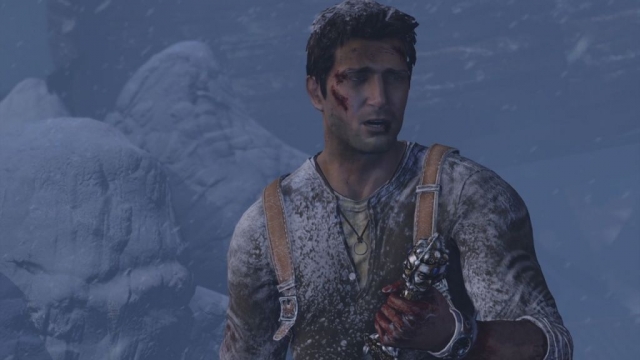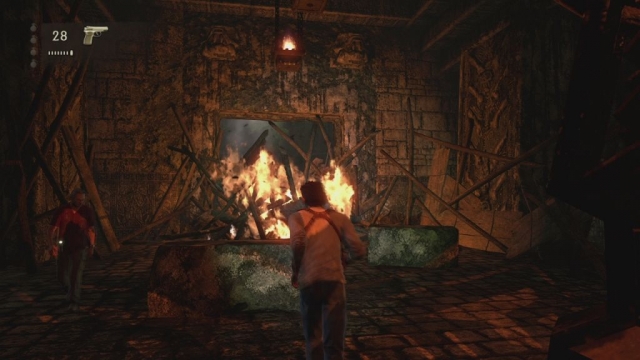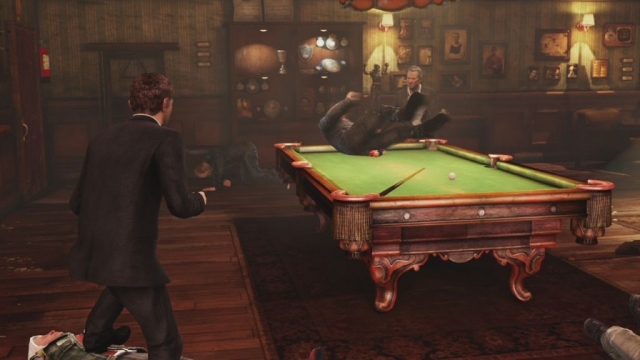Uncharted: The Nathan Drake Collection

The Uncharted trilogy changed gaming for the seventh generation. Third-person shooters were certainly a well-respected genre, but franchises like Tomb Raider had fallen sharply since their prime. The Uncharted series took the concept of exploration and shooting to a whole new level with a compelling cast. Nathan, Sully, and Elisa’s chemistry worked as comedy, drama, and nearly everything in-between. The characters never quite reach the levels of Joel and Ellie in The Last of Us, but you still wind up caring about their adventures.
Unfortunately, since so many gamers skipped out on the PS3 and instead went right to the PS4 after the PS2, some deprived themselves of these epic games. The Uncharted series broke ground when it came to making games seem more like a movie. The first was very experimental, while the second refined and arguably perfected the formula by including more playable sections that could’ve easily been cutscenes in the first. The third entry revamped the second game’s multiplayer and fine-tuned the gameplay while telling a more grand story than before.
Each game’s story varied in terms of time, with a blend of comedy, violence, and a surprising amount of language that made it a hard T-rated game. The crew’s chemistry is very much reminiscent of the Lupin the Third anime series where you have a wise-cracking main character, a sarcastic and world-weary best friend, and a revolving door of love interests with one constant – only instead of Fujiko Mine, it’s Elena Fisher. The journalist-turned-badass saw her story go from someone who was cowering from danger to someone who could hold their own against the odds.
Uncharted: The Nathan Drake Collection tells every story in the main campaign of the first three games, allowing newcomers to digest the series in the best way possible. Much like how the Halo: Master Chief Collection turned me into more of a Halo fan thanks to that same setup, I can see it having an even greater effect here. This is a far more story-driven franchise, and one where you are given characters to root for and eventually root against.
The allies-turned-enemies do tend to be more compelling, which is one drawback of the series. One reason that could be the case is due to them getting so much more screentime. We’ve seen them all on adventures with our heroes, and so we’re more connected to them. The lead antagonists tend to be bosses who are cruel to their underlings and don’t care about collateral damage – so they’re a bit more one note than the main cast in any of the adventures.
Still, each game tells a compelling story – and the revamped visuals make that story slightly easier to tell. The colors for every game are more vibrant, and the worlds are more detailed. None of the games looks bad by any stretch, even with time and technology marching on. However, the original game was rough around the edges – and its issues became more visible with each new entry in the franchise.
Grenade tossing was a sore spot as it involved Sixaxis controls, while gunplay has always been a tad squirrely due to the use of L1 and R1 instead of shoulders. Now, you can execute grenade tosses with an easy button press in Uncharted 1 just like later games and the triggers are used by default for shooting. The end result is a far more comfortable and user-friendly experience for all. Anyone who hasn’t gone through the trilogy yet will want to do so now game-by-game to enjoy the story as it was originally intended. For series vets, it’s always fun to revisit these stories, and even though I’ve played through them all within the past half-decade or so, I greatly enjoyed seeing the series evolve from game to game.
Visually, each game has been revamped a bit with higher-quality textures, but no game receives as big an upgrade as the original. It was a gorgeous game in its day, but looked nearly archaic compared to Uncharted 2’s greatly-increased scope and visual splendor. Now, everything looks about on par with the later games and it results in a better adventure. Screen tearing is gone, and the doubling of the framerate results in a much smoother experience. Character animation can still be a bit stilted, especially in the first game, but new details have been added to them – like Nate having stubble in the first game when there otherwise wasn’t much there. The character models as a whole still have a PS3 look to them, so anyone expecting current-gen models will be disappointed. I found that while the games still had their roots in PS3 appearances, that isn’t really a bad thing as they’re still incredible games to look at.
Uncharted: The Nathan Drake Collection combines three classic games, but it still feels lacking. In terms of content, the lack of multiplayer from the second and third installments greatly hurts the replay value. Uncharted 3’s in particular was outstanding and was one of my most-played multiplayer games for the last generation. Presently, the PS3 servers have been all but abandoned, but the innovative evolving map structure of the game would’ve been a great addition here. Not having the entire experience represented hurts things a bit.
Similarly, there’s no real extra content to go behind the scenes. The original trilogy was good about super-serving the fanbase with bonus videos that showed just how much passion went into the games. Now, you don’t get any of the multiplayer action or any of the behind the scenes stuff. There aren’t even photo galleries, or even an option to run through the major storyline points ala the Yakuza series for those who have played through them before and just want a refresher before Uncharted 4.
This Uncharted collection also feels slightly incomplete without the Vita’s Golden Abyss game on there. Sure, it was easily the weakest entry in the series and some things would have to be worked around without the use of a camera setup – but it was still part of Nate’s story and would’ve helped give this collection a bit more content since they excised the multiplayer components. It also would have allowed the game to gain more exposure than it’s ever had, as many have missed out on it due to its Vita-only nature.
Even though this isn’t a perfect collection, it’s still highly recommended. Newcomers excited over Uncharted 4 should definitely check it out, and anyone wanting a refresher or even just a trip down memory lane should as well. It is gaming’s most cinematic franchise, and one of the best new IPs made over the past decade. Every game in the franchise looks great, sounds even better, and will have you chuckling with the spot-on chemistry of the cast in each entry.
Reviewed By: Jeremy Peeples
Publisher: Sony Computer Entertainment
Rating: 94%
——————————————————————————–
This review is based on a retail copy of Uncharted: The Nathan Drake Collection for the PlayStation 4 provided by Sony Computer Entertainment.
 Game Over Online
Game Over Online











